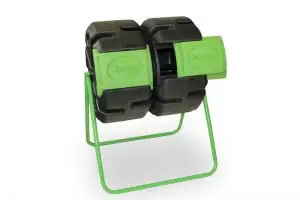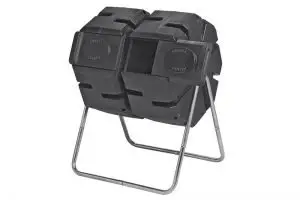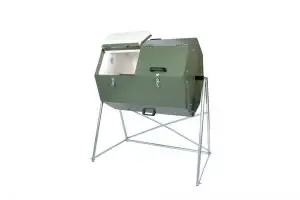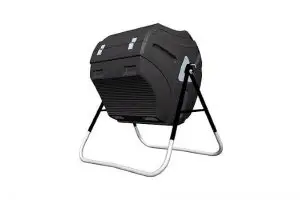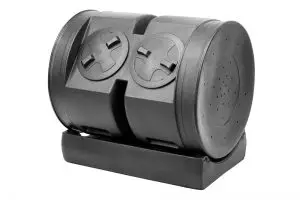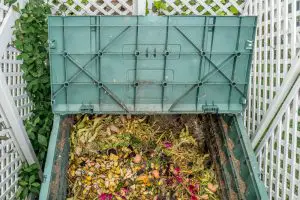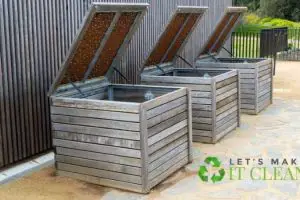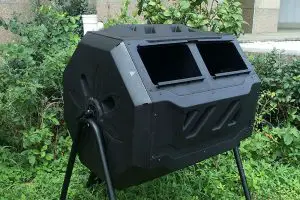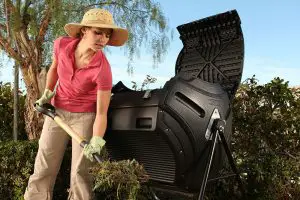Do you have to aerate your compost pile? Actually, no, you don’t. Even without proper aeration, the compost pile content, including kitchen scraps, grass clippings, and other green waste, will still break down.
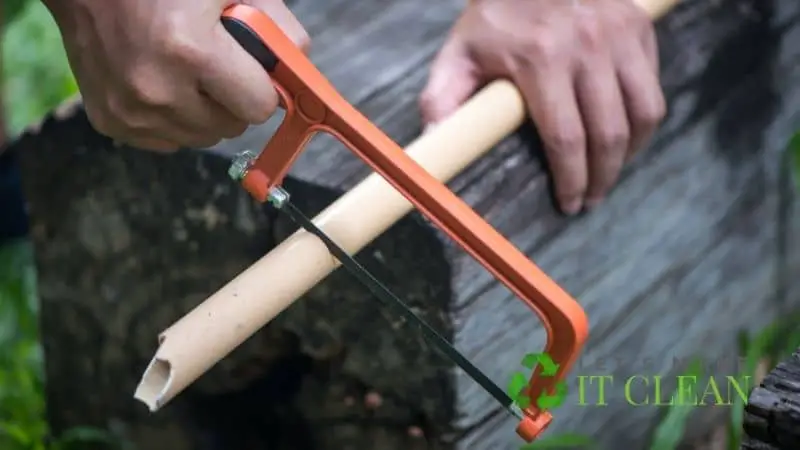
However, it will take longer for the composting process to complete.
Quick Navigation
Apart from taking long to decompose, a lack of proper aeration causes the compost heap to be smelly. If there is no air in the compost heap, the anaerobic bacteria take over, which leads to an unpleasant smell.
So, how can you ensure your compost pile is well aerated? You can decide to make the compost aerator yourself and save some bucks.
Here are a few methods you can use.
Why Aerate Your Compost Pile?
For proper composting, you need ingredients such as kitchen scraps, leaves, and brown waste.
Healthy compost is a result of a proper balance between green waste such as leaves and brown waste. Brown waste includes carbon-rich materials such as cardboard and newspaper shreds.
When the food scraps and ingredients stay long without turning, they become compact, which means no oxygen can get inside the pile. This makes the aerobic microorganisms cease to function, and the anaerobic ones take over.
The anaerobic activities lead to an unpleasant smell, which can be uncomfortable, especially if the bin is near your house. Lack of aeration also slows down the process. As such, you should ensure the compost is aerated at all times.
How to Make Compost Aerator
Using a Pipe
To make a compost aerator using a pipe, start by measuring the height of the bin and ensure you measure below the lid as the pipe will be going inside.
You can purchase the pipe from your local store or make an order online. It also matters the type of material for the pipe so that it doesn’t interfere with the composting process. A PVC pipe is the best.
Next, use a saw to cut the pipe to the proper size. You shouldn’t have a problem with this as the PVC material is not hard to cut. After cutting the pipe, drill holes on the sides at regular intervals. The holes should run on the entire pipe.
Next, make room for the pipe at the center of the bin. You can start by using small sticks and graduate to larger sticks as the hole becomes larger. This ensures you don’t have any problem driving the pipe to the center of the pile.
Finally, drive the pipe to the center of the compost using a wooden or rubber mallet and then put a flyer of brown waste.
The aeration method is not the best if you are looking for hot composting.
Alternatively, you can have two pipes, and they should be long enough to run the width of the pile. Lay one of the pipes at the bottom of the compost area before you can start filling the compost. Then, put the second one at a right angle to the first. And repeat the process until you get to 3 to 4 feet.
You should remove the pipes before removing the complete compost and keep them for re-use.
Using a Broom Handle

Instead of using a fork to turn the compost, you can make a turner to help you turn the pile.
First, cut the broom handle into two pieces, each measuring 5 inches. Then, drill holes in each handles that can fit a tomato stake at the center.
Insert the tomato stake at the center of the first piece of wood and bend it to an L-shape. Insert the second piece and also bend it. Secure the last wood using a nut at the top of the stake. Although the stake is not threaded, the nut will dig into the stake if you use a wrench and remain tight.
If you wish, you can bevel the edges of the handles to make them easy on your hands as you turn the compost. Finally, you should put the end of the tomato stake into a tight spiral.
You can bend and hammer the stake until you squish it into a tight spiral. Alternatively, you can heat the metal to make it easier to end.
A tight spiral will help grab the compost at the bottom of the pile when you drive the aerator into the pile. As such, you will not only be aerating the pile but also enhancing composting.
Active Aerator
Another DIY type of method you can use to aerate your heap is the active aerator.
To use the method, you should cut a tall sapling with a straight portion of the trunk that is about 2 inches in diameter. The trunk should have finger-thick branches at the bottom in a symmetrical pattern.
Use a machete to sharpen the cut end of the sampling to a point and then trim the branches to about 8 inches. You should have enough handle to use while turning the heap.
Next, plunge the aerator into the pile. The branches will fold back like the one on a commercial Wing Digger.
Finally, pull out the aerator with a half twist. The branches will straighten, helping to pull and turn the compost.
Conclusion
There you have it. Simple DIY projects that will make aerating your compost seamless.

